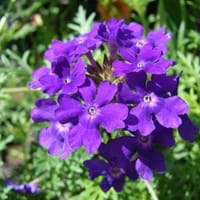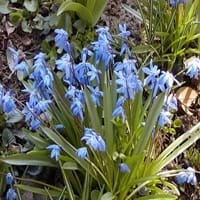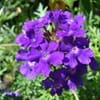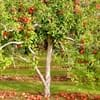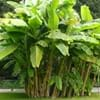Life Span
Annual
Perennial
Type
Flowering Plants
Bulb or Corm or Tuber
Origin
America, Europe
Europe, South Africa, Asia
Types
Clump verbena, Moss verbena, Annual Verbena, Brazilian verbena, Sandpaper Verbana
Scilla Siberica, Scilla Bifolia, Scilla Peruviana
Habitat
Forest edges, Hillside, Woods
Cultivated Beds, Woodland Garden
USDA Hardiness Zone
3-9
2-8
AHS Heat Zone
Not Available
Not Available
Sunset Zone
not available
21,22
Habit
Not Available
Clump-Forming
Minimum Height
Not Available
Minimum Width
Not Available
Flower Color
Blue, Dark Purple, Light Purple, Red, White
White, Blue, Purple, Pink, Violet
Flower Color Modifier
Not Available
Bicolor
Fruit Color
Not Available
Not Available
Leaf Color in Spring
Dark Green
Not Available
Leaf Color in Summer
Dark Green, Green
Light Green
Leaf Color in Fall
Dark Green, Green
Several shades of Green
Leaf Color in Winter
Not Available
Light Green
Leaf Shape
Oblovate
Lance shaped
Plant Season
Early Spring, Late Autumn
Not Available
Sunlight
Full Sun, Partial shade
Full Sun, Partial Sun, Partial shade
Growth Rate
Fast
Not Available
Type of Soil
Well drained
Not Available
The pH of Soil
Neutral, Slightly Acidic
Not Available
Soil Drainage
Average
Not Available
Bloom Time
Early Fall, Early Summer, Fall, Late Spring, Late Summer, Summer
Not Available
Tolerances
Not Available
Drought
Where to Plant?
Container, Ground
Container, Ground, Pot
How to Plant?
Seedlings, Stem Planting
From bulbs
Plant Maintenance
Medium
Medium
Watering Requirements
Do not water frequently, Medium, Never Over-water, Requires regular watering, Requires watering in the growing season
Requires regular watering
In Summer
Lots of watering
Lots of watering
In Spring
Moderate
Moderate
In Winter
Average Water
Average Water
Soil pH
Neutral, Slightly Acidic
Not Available
Soil Type
Well drained
Not Available
Soil Drainage Capacity
Average
Not Available
Sun Exposure
Full Sun, Partial shade
Full Sun, Partial Sun, Partial shade
Pruning
Prune for shortening long shoots, Prune if you want to improve plant shape, Prune lower leaves, Prune regularly, Prune to control growth
No pruning needed
Fertilizers
All-Purpose Liquid Fertilizer
5-10-10 fertilizer
Pests and Diseases
Not Available
Crown rot
Plant Tolerance
Drought
Drought
Flower Petal Number
Single
Single
Showy Foliage
Not Available
No
Foliage Texture
Not Available
Medium
Foliage Sheen
Not Available
Matte
Invasive
Not Available
Not Available
Self-Sowing
Yes
Not Available
Attracts
Butterflies
Birds
Allergy
Arthritis, Asthma, Chest Pain, Itchiness, Whooping Cough
convulsions, Vomiting
Aesthetic Uses
Showy Purposes
Ground Cover
Beauty Benefits
Not Available
Removes dandruff
Environmental Uses
Air purification
Air purification
Medicinal Uses
Arthritis, Gallbladder Diseases, Itching, Jaundice, Joint pain, Kidney problems, Liver problems, Metabolic disorders, Sore throat, Upset stomach, Urinary tract problems
Antiasthamatic, Bronchitis, Lung Problems
Part of Plant Used
Flowers, Root
Leaves, Root
Other Uses
Air freshner, Can be made into a herbal tea, Cosmetics, Decoration Purposes, Economic Purpose, Employed in herbal medicine, Oil is used for aromatherapy, Oil is used in perfume, soaps, creams, etc., Showy Purposes, Used As Food, Used as Ornamental plant, Used for flavoring in Liquors, dairy products, gelatins,puddings, meats, candies, etc., Used for fragrance
Used as a rodenticide, Used to make hair tonic
Used As Indoor Plant
No
Yes
Used As Outdoor Plant
Yes
Yes
Garden Design
Bedding Plant, Bonsai, Container, Edible, Herb
Container, Mixed Border, Rock Garden / Wall, Wildflower
Botanical Name
Purpletop Vervain
SCILLA
Common Name
Verbena
Squill
In German
Eisenkraut
Squill
In French
verveine
Squille
In Spanish
Verbena
Escila
In Greek
λουίζα
σκιλοκρόμμυδο
In Portuguese
verbena
Cila
In Polish
werbena
Cebulica
In Latin
Grindelia
Scilla
Phylum
Magnoliophyta
Magnoliophyta
Class
Magnoliopsida
Lilopsida
Family
Verbenaceae
Liliaceae
Clade
Not Available
Angiosperms, Monocots
Tribe
Not Available
Hyacintheae
Subfamily
Not Available
Scilloideae
Importance of Verbena and Squill
Want to have the most appropriate plant for your garden? You might want to know the importance of Verbena and Squill. Basically, these two plants vary in many aspects. Compare Verbena and Squill as they differ in many characteristics such as their life, care, benefits, facts, etc. Every gardener must at least have the slightest clue about the plants he wants to plant in his garden. Compare their benefits, which differ in many ways like facts and uses. The medicinal use of Verbena is Arthritis, Gallbladder Diseases, Itching, Jaundice, Joint pain, Kidney problems, Liver problems, Metabolic disorders, Sore throat, Upset stomach and Urinary tract problems whereas of Squill is Antiasthamatic, Bronchitis and Lung Problems. Verbena has beauty benefits as follows: Not Available while Squill has beauty benefits as follows: Not Available.
Compare Facts of Verbena vs Squill
How to choose the best garden plant for your garden depending upon its facts? Here garden plant comparison will help you to solve this query. Compare the facts of Verbena vs Squill and know which one to choose. As garden plants have benefits and other uses, allergy is also a major drawback of plants for some people. Allergic reactions of Verbena are Arthritis, Asthma, Chest Pain, Itchiness and Whooping Cough whereas of Squill have convulsions and Vomiting respectively. Having a fruit bearing plant in your garden can be a plus point of your garden. Verbena has no showy fruits and Squill has no showy fruits. Also Verbena is flowering and Squill is not flowering . You can compare Verbena and Squill facts and facts of other plants too.
